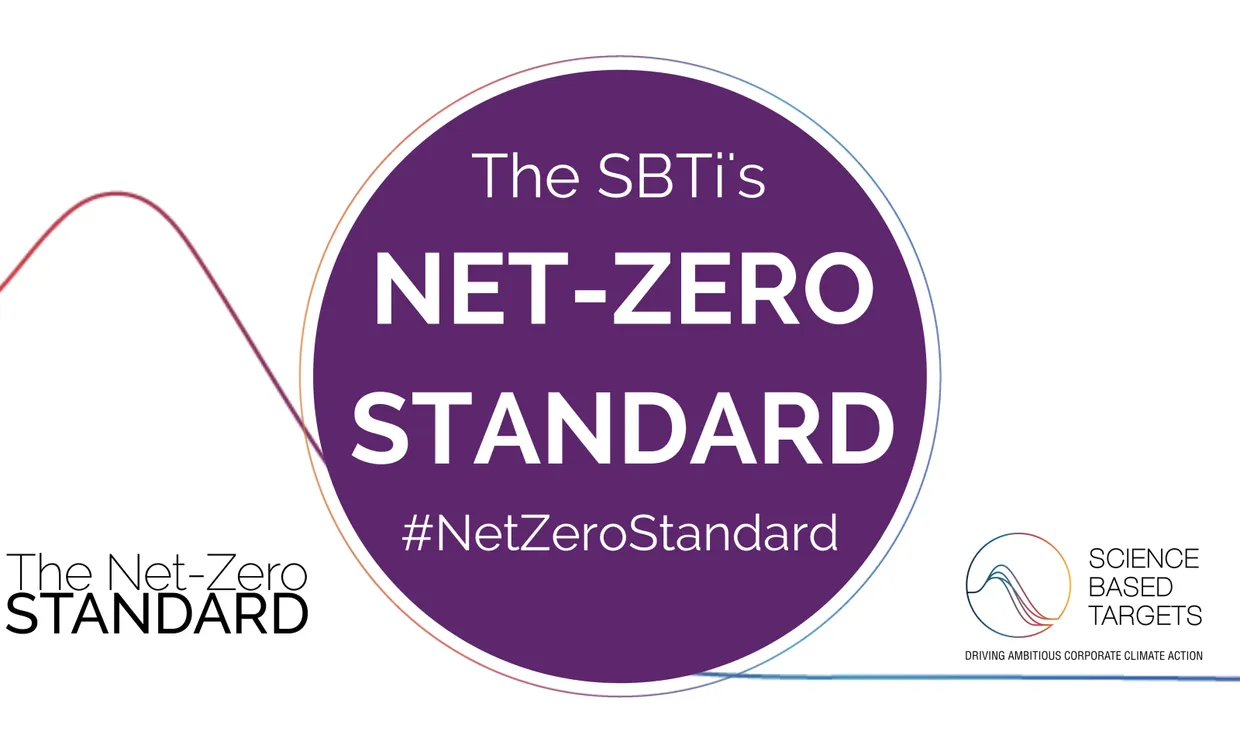What is the SBTi?
The Science Based Targets initiative (SBTi) is a global body that drives ambitious climate action in the private sector by enabling companies to set emissions reduction targets grounded in climate science. Formed through a partnership between CDP, the United Nations Global Compact, World Resources Institute (WRI), and WWF, the SBTi has become the gold standard for climate target-setting in business. The SBTi guides organizations through the process of setting term science based targets, ensuring that targets set are in accordance with SBTi standards and aligned with international frameworks.
By translating the goals of the Paris Agreement – namely, limiting global warming to 1.5°C – into specific, actionable pathways, the SBTi offers a robust methodology for companies and now financial institutions to align with a net-zero future. The SBTi helps companies achieve their climate goals by ensuring targets are set in line with the latest climate science. Over 5,000 companies have committed to setting science-based targets through the SBTi, reflecting its growing influence and credibility.
What is the SBTi net-zero standard for financial institutions?
Released in July 2025, the Financial Institutions Net-Zero Standard is the first comprehensive, science-based framework designed specifically for the financial sector. It enables banks, insurers, asset owners, asset managers, and private equity firms to set clear, science-aligned net-zero targets across all of their financial activities—including lending, investment, insurance underwriting, and capital markets.
The new standard recognizes the critical role financial institutions play in shaping the real economy. Rather than focusing solely on operational emissions, the emphasis is on portfolio alignment. In other words, financial institutions must look at the emissions associated with the companies and activities they finance and ensure these are on track for a 1.5°C-compatible trajectory. Financial institutions are required to account for the total scope of their financed emissions, covering all relevant scopes (Scopes 1, 2, and 3) as defined by the standard.
Key features of the new standard include:
- Expanded asset class coverage to make the standard applicable across a wide range of financial services.
- Emissions inventory improvements, ensuring better transparency and consistency, and highlighting the importance of tracking base year emissions for accurate target setting.
- Net-zero alignment targets for clients and counterparties, providing a flexible approach to target-setting. The process of net zero target setting requires each company to establish a clear net zero target, specify a net zero target date and net zero target year, and set a target date and target year for achieving these goals.
- Decarbonization of the built environment, offering guidance for real estate and infrastructure portfolios.
- Deforestation risk management, requiring institutions to monitor, disclose, and address exposure.
- Fossil fuel transition policies, mandating clear steps to phase out new financing or underwriting of fossil fuel activities.
Each company has responsibilities to set based net zero targets aligned with the standard, and a company’s obligations include measuring emissions, aligning targets with climate initiatives, and considering long-term commitments.
The standard is the product of a rigorous development process, including two public consultations, pilot testing by over 30 financial institutions, and input from a global network of experts across academia, NGOs, and industry. Detailed information and specific guidance are available in the official documentation, with further details to be provided in upcoming updates. It builds on the SBTi’s earlier Near-term Criteria for Financial Institutions but now offers a full net-zero framework with long-term targets, and existing targets will be reviewed or updated under the new framework.
What is the SBTi corporate net-zero standard?
The SBTi’s Corporate Net-Zero Standard, released in 2021, was the first global standard for companies to set net-zero targets grounded in science. It focuses on reducing direct (Scope 1), indirect (Scope 2), and value chain (Scope 3) emissions, requiring companies to address all greenhouse gas and greenhouse gas emissions in line with the standard. Companies must decarbonize at least 90% of their emissions by 2050, highlighting the importance of emissions reductions across value chain emissions and chain emissions. Value chain mitigation and chain mitigation are critical strategies for achieving these reductions. The remaining emissions, often referred to as residual emissions, are managed through high-quality carbon removals. Beyond value chain mitigation, value chain mitigation bvcm, and bvcm activities, such as investing in carbon offsets and carbon credits, play a key role in addressing remaining emissions and fulfilling net-zero commitments.
While both standards share the same 1.5°C ambition and scientific foundation, they differ in application. The Corporate Standard applies to entities that emit directly through operations and supply chains, whereas the Financial Standard is tailored for institutions whose impact is primarily indirect, through the capital they allocate. When comparing standards, it is important to note the distinction between carbon neutral and net zero, with net zero requiring a long term scope of targets and a focus on limiting warming to 1.5°C as defined by the SBTi.
Notably, the Financial Institutions Net-Zero Standard aligns closely with the Corporate Standard to ensure consistency and complementarity. Financial institutions are expected to support their investees and clients in aligning with the Corporate Standard, effectively becoming amplifiers of real-world decarbonization.
How should financial institutions prepare?
Financial institutions aiming to align with the new standard should begin by conducting a comprehensive assessment of their current portfolios and climate-related exposures. Key steps include:
- Inventory and data readiness: Institutions must ensure they have a reliable and transparent inventory of financed emissions. This may require improved data collection, new systems, or third-party verification. It is crucial to track emissions over a specified period to ensure accurate measurement and verification.
- Portfolio analysis and prioritization: Institutions should identify high-emitting sectors and companies within their portfolios, assess alignment, and prioritize engagement or divestment strategies accordingly.
- Target-setting strategy: Decide whether to pursue financed emissions reduction pathways or net-zero alignment targets, depending on data availability and business model. In addition to long-term goals, setting and regularly reviewing near term targets is essential to ensure timely progress and compliance with evolving standards.
- Fossil fuel and deforestation policies: Institutions must implement transition policies that set clear rules around new financing to fossil fuels and expectations for addressing deforestation risk.
- Governance and accountability: Climate strategies must be embedded into governance structures, with board oversight and executive accountability for net-zero targets.
- Stakeholder communication: With increasing scrutiny from regulators, investors, and the public, transparent disclosure of net-zero targets and progress is essential.
The SBTi provides a step-by-step guide for setting targets under the new standard, along with technical assistance, case studies, and webinars.
Financial institutions can also join a growing network of early adopters: 135 institutions across six continents have already committed to setting targets against the new framework. As part of this transition, it is important to review and update existing targets to ensure alignment with the latest requirements and timelines.




